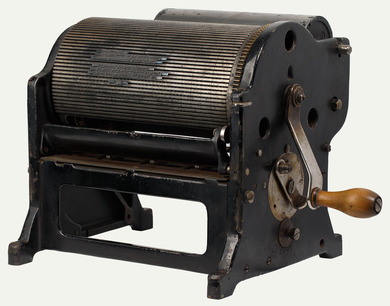Flyers
The ideal is: the flyer, the piece of paper entirely worthless from a library perspective, the simple scrap of paper that you stuff in your pocket. Or you throw it away, and that is what it’s all about, that you never forget it once you have seen it: such a deep impression has it made on you.
Ludwig Rubiner, Programm der Zeitschrift Zeit-Echo, 1917
Short messages and notes have a special attribute – they are characterised by extreme mobility, and contain information that is usually only relevant for a short time. They are written easily and quickly and tend to deal with practical aspects such as price and availability at the right time and in the right place. Messages that are political, commercial or official in character might be written or printed on both sides and handed out to be read by the recipient. If a sheet is only printed on one side, it can be hung up as a poster or as information to be read by many.
So-called broadsheets have been widespread since the invention of printing using movable type. During the Reformation and the Thirty Years War, flyers took on political significance and increasingly became a means of campaigning in the war of opinions, but also a means of spreading news. In World War II, for example, English aeroplanes dropped packages of flyers with anti-fascist messages on them over Germany.

